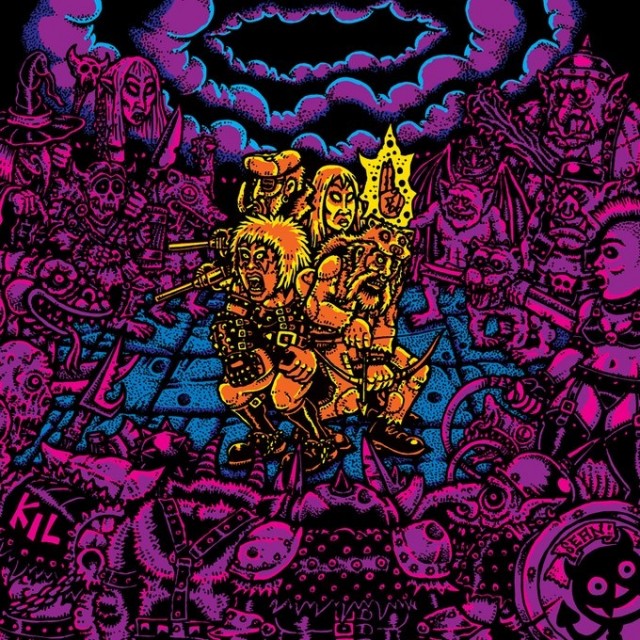Have you ever seen My Left Foot? It’s a film in which Daniel Day-Lewis portrays an artist with severe cerebral palsy. Day-Lewis is phenomenal in the role, as he always is, and it won him a deserved Oscar. He prepared for it by spending eight weeks in a cerebral palsy clinic and learning to paint with his feet. It’s an astonishing performance but in retrospect, it begs a huge question: why not cast an actor with actual cerebral palsy instead?
Questions like this are everywhere in the modern age. One of the most egregious examples is the casting of Tilda Swinton, a white woman, as an Asian character in Doctor Strange. This rankles because the world is not short of talented Asian women to act, but Hollywood is pathetically short of roles to offer them. So when one of the few opportunities to widen that representation goes to waste, it stinks.
Yet if we take that argument to its logical extreme, we’d never have been able to admire Day-Lewis’ astonishing turn in My Left Foot. An actor in desperate need of a role would have got work instead, and we’d have a better representation of disability on screen. Yet it’s unlikely we’d have got such an incredible piece of art. Getting the right balance is very difficult. Of course, these examples are not quite the same, but they spring from the same place. A reluctance on the part of directors and audiences to embrace the authentic in place of the familiar. If you want an example of how My Left Foot might be problematic today, look at the controversy over musician Sia’s choice to cast a non-autistic lead in a film about an autistic girl.
Of course, these examples are not quite the same, but they spring from the same place. A reluctance on the part of directors and audiences to embrace the authentic in place of the familiar. If you want an example of how My Left Foot might be problematic today, look at the controversy over musician Sia’s choice to cast a non-autistic lead in a film about an autistic girl.
What does this have to do with games? Well, a lack of cultural insight has not stopped a long parade of white designers from publishing games full of awkward stereotypes. The most recent example is Italian designer Daniele Tascini, whose oeuvre contains a lot of acclaimed but tone-deaf games about Asia and Mesoamerica. So it’s no great surprise that comments have now come to light suggesting he is, at best, also tone-deaf about racism and sexism. Why not leave it up to Asians and Mesoamericans to make games about themselves?
Issues like this become more problematic in historical simulations. Some older games gave thoughtless, one-sided portrayals of colonial barbarity that were horrific in their blindness. Things have got much better in that regard but there are still errors. Labyrinth caught a lot of flack for its broad assumptions about the motivations and mechanics of Islamic terrorism. But as designers improve, there remains a shocking absence at the heart of historical games.
This was exemplified on Twitter by a British-Libyan gamer asking why there were few historical games that took the perspective of colonised nations. It’s easy to respond that designs are more alert to cultural insensitivity now but the key point is that that’s not the same thing. An Infamous Traffic might present the opium trade as the brutally cynical exercise in addiction for profit that it was. But it still casts the players as English traders snaking their tendrils into China. The Chinese are passive resources to be exploited and while the cruelty of that exploitation may be front and centre, their viewpoint and agency are not.
Finding counter examples is difficult but there are a few. Conquest of Paradise is an example, which depicts the growth of Polynesian civilization across the Pacific. But this was still designed by a middle-aged white guy. And while Conquest of Paradise didn’t raise any eyebrows, another design of his on Maori history did cause a bit of a stir. You’d have thought there were plenty of Maori already able to deliver a game on the subject. Yet, to my knowledge, they have not. And one reason why we have few games on the experience of being colonised is that we have few designers from the relevant backgrounds. That’s not surprising. Game design is an overwhelmingly white, male space. Historical gaming, in particular, tends to attract an audience that is actively hostile to progressive views. Those whose culture has suffered under the colonial yoke may not wish to revisit those horrors. They may have had enough of dealing with daily discrimination without bringing it into game design. They may have no cultural context for turning conflict into a game.
Yet, to my knowledge, they have not. And one reason why we have few games on the experience of being colonised is that we have few designers from the relevant backgrounds. That’s not surprising. Game design is an overwhelmingly white, male space. Historical gaming, in particular, tends to attract an audience that is actively hostile to progressive views. Those whose culture has suffered under the colonial yoke may not wish to revisit those horrors. They may have had enough of dealing with daily discrimination without bringing it into game design. They may have no cultural context for turning conflict into a game.
One way to solve this is to ensure more diverse hiring among publishers, but that’s a difficult ask in an industry where design remains focussed on freelance pitches. A more realistic goal is partnership and mentoring. If you want to make a game about an unfamiliar culture, reach out to the player base and find someone of that culture to help you. That way your game will be better, diversity will be improved and you’ll have given a leg-up to an aspiring designer. But even that may still be difficult for the reasons given above.
We’re left with a chicken and egg problem. To get more games on cultural subjugation we need more designers from the affected cultures. To get more designers, it would help to have more games, to show that the gaming world treats the subject as important. Which takes us back to the beginning. Perhaps the fastest way out is to be more receptive to white people designing sympathetic games on the topic.
After all, there’s not a long trail of justified outrage about Day-Lewis in My Left Foot. Which begs the question of why that is, compared with Swinton in Doctor Strange? The answer is both simple and complex: context. Doctor Strange took no care with the cultures it plundered, offering gauche Asian stereotypes to appease the audience. The crass casting of a white woman in an Asian role added insult to injury. My Left Foot, by contrast, made an effort to offer a thoughtful, realistic portrayal of disability which mixed humour and awkwardness with the usual tired tropes.
When it comes to questions like these, everyone wants clear dividing lines about what is right and what is wrong. Well-meaning white folk are anxious not to cause offence and look for strict rules to avoid making insulting mistakes. But the problem is that no such rules exist. As our examples from the movie world show, it always depends on the wider context. And there’s no way to judge that context until you’ve seen the whole of the finished product.
This is not an excuse for appropriation. If people want to try their hand at cultures and histories that are not their own, the onus is on them to do the research and get it right. It is only a suggestion that those who stand to be misrepresented bide their time before passing judgement. It may be that Sia’s film is a rich and insightful portrayal of autism despite the casting. It may not. But outrage should be saved until we know either way.
I’m not immune to the irony of me, a white male writer, making this plea of clemency for other white men. But I hope that all I’m doing here is raising a question, and it’s not a question for me to answer. That’s for the people on the sharp end. The oppressed, the marginalised, the people with Cerebral Palsy watching My Left Foot. While it may be okay for white people to carry on dipping into these subjects, it’s still on us to listen to the feedback we get and to act on it to grow and to change and do better.
 Games
Games How to resolve AdBlock issue?
How to resolve AdBlock issue? 

























